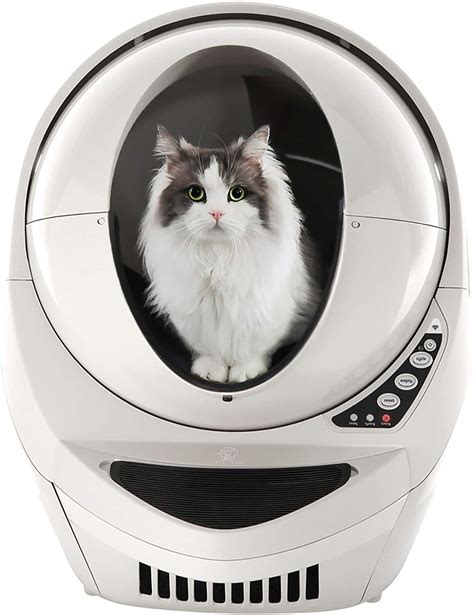Choosing the Ultimate Litter Box for Your Feline Friend
Modern advancements have revolutionized pet care, and the humble litter box is no exception. Enter robot litter boxes – automated marvels designed to make litter box maintenance a breeze for cat owners.

Understanding Robot Litter Boxes
Robot litter boxes use technology to automate the cleaning, scooping, and disposal of cat waste. They come in various models, each with unique features:
- Self-Cleaning: Empties the waste receptacle automatically.
- Self-Scooping: Uses a rotating scoop to separate waste from clean litter.
- Automatic Disposal: Conveys waste to a sealed receptacle, eliminating odors.
Market Overview: A Growing Industry
The global robot litter box market is projected to reach $1.7 billion by 2025, with an expected annual growth rate of 11.8%. This surge is driven by:
- Rising pet ownership rates
- Increased demand for convenience and hygiene
- Growing awareness of the benefits of automation
Choosing the Right Box: Factors to Consider
Navigating the world of robot litter boxes can be overwhelming. Consider these factors to narrow down your options:
- Capacity: The size of the waste receptacle and its ability to hold multiple uses.
- Waste Disposal Method: Choose from self-contained systems or those requiring manual disposal.
- Cleaning Frequency: Determine how often the box will clean itself, ranging from hourly to daily.
- Litter Type Compatibility: Ensure the box works well with your preferred litter type (e.g., clay, crystal).
- Price: Robot litter boxes vary in price, so set a budget and research accordingly.
Model Comparison: Side-by-Side View
To provide a detailed comparison, let’s analyze two popular models:
| Feature | Litter-Robot 4 | Leo’s Loo Too |
|---|---|---|
| Waste Disposal | Sealed Bag Disposal | Manual Removal |
| Cleaning Frequency | Every 24 Hours | Every 12 Hours |
| Litter Compatibility | All Litter Types | Clumping Litter Only |
| Price | $499 | $299 |
Top Features to Consider
Beyond the basics, advanced features can enhance the user experience:
- Odor Control: Activated carbon filters, air fresheners, or sealed waste disposal systems effectively eliminate odors.
- App Control: Some models allow remote monitoring, cleaning scheduling, and waste alerts through an app.
- Health Tracking: Sensors can monitor your cat’s litter box habits, providing insights into their health and well-being.
Installation and Maintenance
Setting up a robot litter box is straightforward:
- Placement: Choose a quiet, easily accessible location.
- Assembly: Follow the manufacturer’s instructions for assembly.
- Setup: Configure any app or scheduling features.
- Maintenance: Regularly empty the waste receptacle, replace the liner if applicable, and clean the sensors as needed.
Conclusion
Robot litter boxes revolutionize cat litter care, offering convenience, hygiene, and peace of mind. By carefully considering your needs, comparing models, and following the installation and maintenance guidelines, you can find the ideal litter box for your feline companion.
Frequently Asked Questions
- Are robot litter boxes worth the price? It depends on your budget and priorities. However, the convenience and hygiene benefits can be worth the investment for many cat owners.
- How often do I need to scoop a robot litter box? Most robot litter boxes clean themselves automatically, eliminating the need for manual scooping.
- What types of litter can I use in a robot litter box? Compatibility varies by model, but many boxes are designed to work with various litter types. Check the manufacturer’s instructions for specific recommendations.
- Can robot litter boxes really reduce odor? Yes, many models use odor control features such as sealed waste disposal, activated carbon filters, and air fresheners to minimize unpleasant scents.
- Can I monitor my cat’s health with a robot litter box? Some advanced models offer health tracking features that can provide insights into your cat’s litter box habits, which may indicate health issues.





















